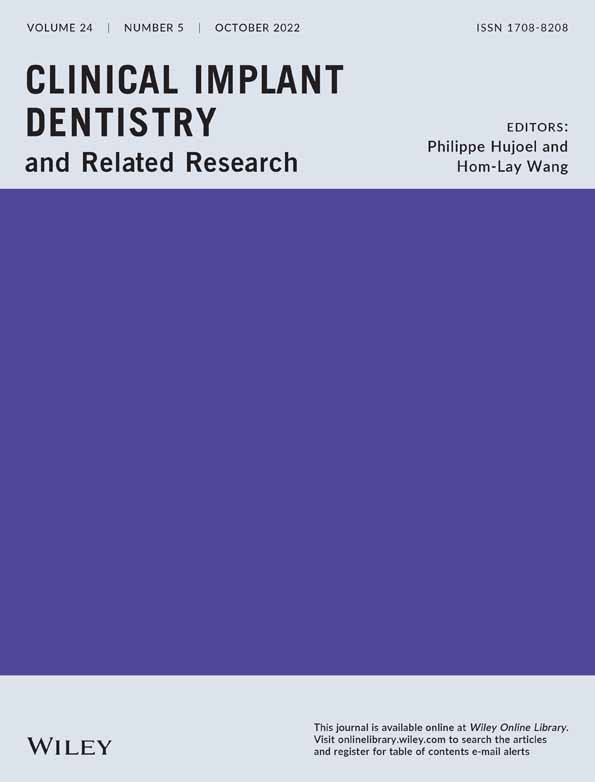Clinical, radiographic, and biochemical evaluation of two-piece versus one-piece single implants with a laser-microgrooved collar surface after 5 years of functional loading
Abstract
Aim
To compare the clinical and radiographic conditions and the expression of pro-inflammatory cytokines in peri-implant crevicular fluid (PICF) at two-piece/bone level (TP/BL) versus one-piece/tissue level (OP/TL) single implants with a laser-microgrooved collar after at least 5 years of loading.
Materials and Methods
In total, 20 single TP/BL implants and 20 contralateral OP/TL implants, both with a laser-microgrooved collar surface, in 20 systemically and periodontally healthy subjects (12 males and 8 females, between the age of 36 and 64 [mean age of 49.7 ± 12.3 years]), were examined. Levels of IL-1β, IL-1RA, IL-6, IL-8, IL-17, b-FGF, G-CSF, GM-CSF, IFN, MIP-1β, TNF-α, and VEGF were assessed in PICF using the Bio-Plex 200 Suspension Array System. Plaque index (PI), probing depth (PD), bleeding on probing (BOP), and gingival recession (REC) were recorded. Radiographic crestal bone levels (CBL) were assessed at the mesial and distal aspects of the implant sites.
Results
The mean PI, PD, BOP, and REC values had no significant differences in either group. A higher mean value of CBL with statistical difference was detected for TP/BL compared with OP/TL implants. The levels of IL-1β, IL-6, IL-8, GM-CSF, and MIP-1β and TNF-α were higher at TP/BL implants than at OP/TL implants. However, only IL-1β, IL-6, and TNF-α values presented significant differences between the groups.
Conclusions
Although after 5 years of loading single TP/BL and OP/TL implants with a laser-microgrooved collar surface presented similar good clinical conditions, a higher proinflammatory state and higher crestal bone loss were detected for TP/BL implants.
CONFLICT OF INTEREST
The author declares that there is no conflict of interest that could be perceived as prejudicing the impartiality of the research reported.
Open Research
DATA AVAILABILITY STATEMENT
The data that support the findings will be available in [repository name] at [DOI/URL] following an embargo from the date of publication to allow for commercialization of research findings.




